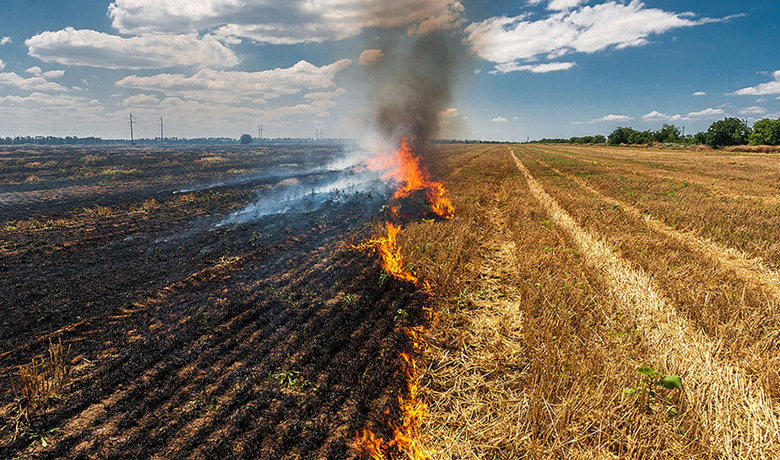Turning crop residue into fuel for agricultural growth
Crop residue can be turned to a clean energy source for agricultural cold storage if the right mechanisms exist. This can prove to be a potential solution to the large-scale stubble burning in Punjab and Haryana that massively contributes to air pollution in Delhi and other parts of North India every winter.

Crop residue burning has now been established as a major cause of air pollution, and consequently of worsening public health. Around 35 million tonnes of crop residues are burnt every year in Punjab and Haryana alone – the grain bowls of India. These two states have a predominant paddy-wheat cropping pattern. The high water demand of these crops is also badly affecting the groundwater of the region. One of the solutions is for farmers to shift to horticultural crops such as fruits and vegetables. However, such crops are perishable and require cold storage facility for farmers to be able to take them to faraway markets and get profitable deals on them.
This scoping study by TERI explores the possibility of a course of action that addresses both these issues by converting biomass crop residue into fuel to run decentralised cold storage facilities. This study looks at the potential interventions in Punjab and Haryana to make this possible. According to the study, utilisation of paddy straw (currently burnt off in the field at the end of the kharif season) offers tremendous potential for increasing the share of clean energy in meeting local fuel and electricity requirements. It can also meet the growing demand for cooling energy in rural areas for agriculture value chain enhancement and milk chilling in Punjab and Haryana. However, setting up bio-waste collection and supply chain mechanisms are crucial for this to take place. The study also reveals that there is huge demand for solid fuels such as coal and fuel wood in the local economy but they are expensive as they have to transported over long distances. To address this demand locally, it is imperative to create biomass supply chain mechanism involving entrepreneurs and setting up facilities to convert these materials into useful forms such as briquettes, pellets etc.
According to the study’s findings –
- Additional policies are needed on crop residue collection and aggregation that will encourage private investment and provide options to farmers to dispose their bio-waste materials and build viable business models to establish bio-waste supply chain mechanism
- This could also allow private sector to invest in processes for valorisation of bio-waste material through production of bio-CNG, bio-ethanol, bio-pellets, bio-power, paper, tableware, fabric production etc
- Solutions can be in the use of paddy straw as fuel for running decentralised cold storage to store horticulture produce and milk chilling applications at the village level. This results in providing options to wheat and rice farmers to shift to horticultural and other crops
- There are existing policies and directives to utilise bio-waste for different purposes. The alternative uses of crop residue need to be analysed undertaking techno-financial evaluation and socio-economic assessment of selected options (e.g. 100% paddy straw based power generation, co-firing in existing thermal plants, brick kiln industries as fuel) and environmental and health benefits. Supply chain analysis and impediments to scaling up chosen alternatives and/or best practices can help develop feasible business models
- There is a need for awareness creation and sensitisation of different stakeholders in whole value chain, including state and district level agencies, about the new methods and advanced technologies for management of crop residue and its application as a clean fuel source
- It is recommended that an independent platform be set up to facilitate industry-academia collaboration to develop a process for identification of innovative techno-economic cooling options customised for Indian conditions. The platform should develop a process for identification of low-GWP (global warming potential) refrigerants and advanced energy efficient cooling technologies for agriculture
